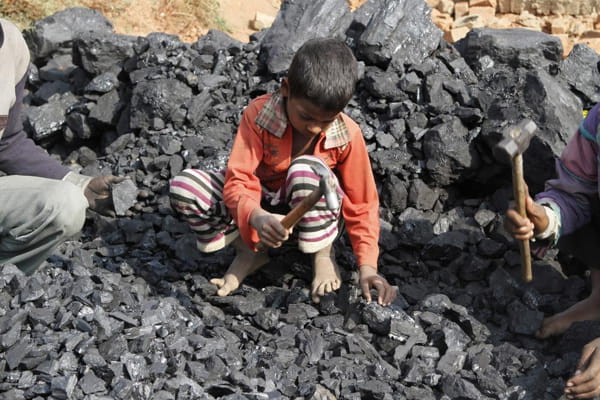World Day against child labour

MOHAMMAD HANIEF
Although significant strides have been taken in reducing child labour over time, recent years have seen global trends reverse, underscoring the pressing need to unite efforts in expediting actions to eradicate child labour in all its manifestations.
Since 2000, for nearly two decades, the world had been making steady progress in reducing child labour. But over the past few years, conflicts, crises and the COVID-19 pandemic, have plunged more families into poverty – and forced millions more children into child labour. Economic growth has not been sufficient, nor inclusive enough, to relieve the pressure that too many families and communities feel and that makes them resort to child labour. Today, 160 million children are still engaged in child labour that is almost one in ten children worldwide.

Africa ranks highest among regions both in the percentage of children in child labour – one-fifth – and the absolute number of children in child labour – 72 million. Asia and the Pacific ranks second highest in both these measures – 7% of all children and 62 million in absolute terms are in child labour in the region. With the adoption of Sustainable Development Goal Target 8.7, the international community made a commitment to the elimination of child labour in all its forms by 2025.
The Africa and the Asia and the Pacific regions together account for almost nine out of every ten children in child labour worldwide. The remaining child labour population is divided among the Americas (11 million), Europe and Central Asia (6 million), and the Arab States (1 million). In terms of incidence, 5% of children are in child labour in the Americas, 4% in Europe and Central Asia, and 3% in the Arab states.
While the percentage of children in child labour is highest in low-income countries, their numbers are actually greater in middle-income countries. 9% all children in lower-middle-income countries, and 7% of all children in upper-middle-income countries, are in child labour. Statistics on the absolute number of children in child labour in each national income grouping indicate that 84 million children in child labour, accounting for 56% of all those in child labour, actually live in middle-income countries, and an additional 2 million live in high-income countries.
Every child has the right to health, education and protection, and every society has a stake in expanding children’s opportunities in life. Yet, around the world, millions of children are denied a fair chance for no reason other than the country, gender or circumstances into which they are born. International days and weeks are occasions to educate the public on issues of concern, to mobilize political will and resources to address global problems, and to celebrate and reinforce achievements of humanity. The existence of international days predates the establishment of the United Nations, but the UN has embraced them as a powerful advocacy tool. We also mark other UN observances. The World Day Against Child Labor is held annually on June 12. It is an international day to raise awareness and prompt action to stop child labor in all of its forms. The International Labour Organziation (ILO) launched the World Day Against Child Labor in 2002. Since then, the day has focused attention on the prevalence of child labor throughout the world and the action and efforts essential to eliminating it. The International Labour Organization defines child labor as “work that deprives children of their childhood, their potential and their dignity, and that is harmful to physical and mental development.” Not all work done by children is child labor. Activities that contribute to a child’s positive development and provide skills and experience for them to become productive members of society are not child labor.
The abolition of child labour is indeed a fundamental aspect of the pursuit of social justice. It represents the belief that every worker, regardless of age, should have the freedom and equal opportunity to receive their fair share of the wealth they have contributed to generating. By eradicating child labour, we strive to create a society where all individuals, including children, are treated with dignity and have access to quality education, adequate living conditions, and opportunities for personal development. This vision of social justice encompasses the idea that everyone deserves a fair and equitable chance to prosper and thrive, unburdened by the exploitation of child labour.
Economic growth, while important, has not been sufficient or inclusive enough to alleviate the pressures that drive families to rely on child labour as a means of survival. Child labour is a visible manifestation of the larger issues of poverty and exclusion. It denies children access to education and opportunities, placing them at a disadvantage in securing decent incomes and stable employment in adulthood.
While child labour primarily affects households and families, it also hinders the economic growth of entire countries and contributes to rising inequality worldwide. It poses a threat to social cohesion and impedes overall human progress. Addressing child labour requires comprehensive efforts to tackle poverty, promote education, and ensure opportunities for decent work and economic development. Over the years, World Day Against Child Labour has contributed to increased global attention on child labour issues and has played a crucial role in driving collective action to eradicate this violation of children’s rights. It serves as a reminder of the ongoing challenges and the need for sustained efforts to create a world free from child labour.
